-
Friends, our 2nd Amendment rights are always under attack and the NRA has been a constant for decades in helping fight that fight.
We have partnered with the NRA to offer you a discount on membership and Muzzleloading Forum gets a small percentage too of each membership, so you are supporting both the NRA and us.
Use this link to sign up please; https://membership.nra.org/recruiters/join/XR045103
You are using an out of date browser. It may not display this or other websites correctly.
You should upgrade or use an alternative browser.
You should upgrade or use an alternative browser.
Wish to build, Smothy or rifled, what are advantages of each ?
- Thread starter Chuck Yoder
- Start date

Help Support Muzzleloading Forum:
This site may earn a commission from merchant affiliate
links, including eBay, Amazon, and others.
August West said:Well alrighty then.
Frankly I am a hunter and shooter, and shoot and hunt with what pleases me and what works well. I am sure your documentation is correct and is interesting to reenactors or trekkers, however the OP asked the pros and cons of rifles and smoothbores not which one was used when and where. I am not a living historian, there is zero chance that I will trade my danners for homemade moccasins in the forseeable future, likewise, if my guns are not perfectly HC I really could care less.
You mentioned that you have 44 years of experience, that is relevant how? Fact of the matter is, there is no do everything gun, rifle or smoothbore, in the swamps and thickets of the southeast where I hunt the smoothbore is the better choice IMO, I have never been to montana, I am sure your choice worksfor you there. Again IMO, if you are going to shoot feral pigs anything below 50 is too light, big boar's cartiledge shield can be real thick and tough and the little fellers probably won't get through it, your mention of headshots only is just silly. Conversly anything over 50 is grossly too large for small game, I have 30 years of experience myself and have shot a lot of critters with a lot of calibers and as I said, anything but a headshot destroys too much meat. You mentioned barking squirrels, well sir that is a myth, it is possible, but not with any degree of reliability. I have tried with multiple rifles, both modern and blackpowder and you might get 1 out of 10 squirrels "barking " them.
I hunt whitetail deer, feral hogs, wild turkeys and small game all with the same gun and keep my freezer full. My 20 bore is not HC or PC but in the swamps I call home it works and works well. You posted a pic of where you hunt, I would be remiss if I didn't do the same, I killed a 300 lb+ hog at less than 20 yds not far from where this pic was taken.Chris

I did not say the SB did not work.
I said historically the TRADE GUN took more powder and lead than the rifle and that its not as efficient. This has been known for near 300 years it would seem
A 50 or 62 or 69 caliber ball could care less what its fired from. The animal struck could care less if its fired from a rifle or a SB.
I have owned several smoothbores (bet you thought I never had) but I always find them a disappointment. But I don't hunt in the east and tree stands and blinds are useless. Out here you gotta find the critter and go shoot it in most cases. The country is too big and the animals are not channeled to contained much. So you may get 40 yard shots or 120 yard shots. One does not know when he leaves in the AM.
The historical information is just what exists. I did not write it or even find it in the original documents. Its not my fault that Sir William Johnson wrote that the people in PA did not shoot with small shot.
But if you think that a 62 will kill a deer deader than a 50 you are mistaken. I have shot deer with 50-54-58-67 caliber RB rifles, various BPCRs from 38-40 up to 50-70. 45-70 BP loads and various modern highpowers. I have witnessed quite a few shot with calibers I did not own.
The distance the deer will travel is dependent on its mindset when the bullet strikes. The larger ball MAY kill it quicker or it may not. Its almost a sure thing that a lung/heart shot deer will make about 40 yards before piling up. IT MATTERS NOT AT ALL WHAT ITS SHOT WITH with in reason. A mule deer buck shot broadside just over the the heart with a 45 RB and 45 grains of powder made if farther than the doe shot with the 16 bore rifle, but it still died in SECONDS.
Now some will fold like a house of cards, perhaps 1 in 15 or 20 or likely less. Some may make 200 yards. But its impossible to tell until the deer is dead.
I shot a mule deer doe at about 40 yards, out on the prairie in that photo, I was stalking them when for whatever reason they decided to come past me. She was facing me just slightly less than dead on wondering what the heck was this lump out in the grass, I had sat down when I saw them moving.
The ball struck just to one side and slightly below the windpipe, totally destroyed the top of the heart.
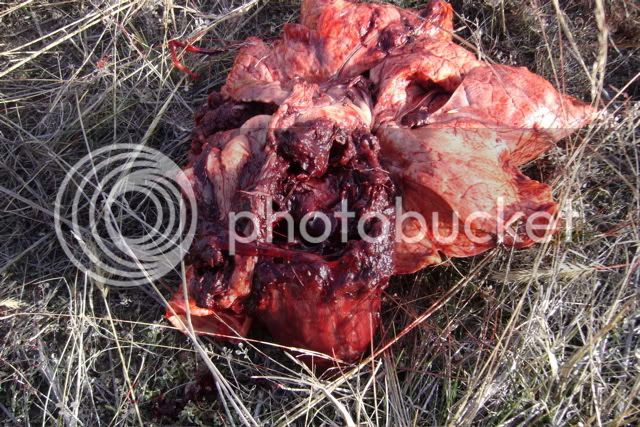
There was meat, fat and blood ejected out of the wound back toward the gun.
The doe then turned 90 degrees and ran 55 long steps before collapsing.
The blood trail looked like this
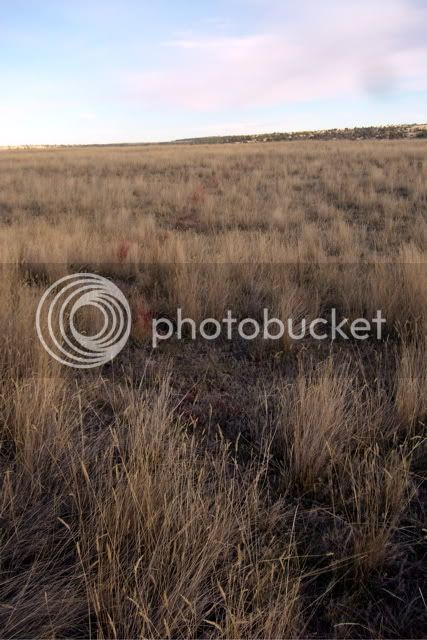
The load? A .662 Rb in front of 140 gr of FF swiss. Makes 1600 fps at the muzzle.
Now would this deer have ran farther shot with a 50 or 54 or 62. I CANNOT SAY. Its a one shot experiment. She ran until her brain ran out of oxygen.
Now you want to say my 44 years of experience means nothing but yours somehow does. This is silly. I have ALWAYS paid close attention to the wound channels and damage done and I have found that while more is always better its not as important as placement.
I shot a buck with a 38-40 with 180 gr FP bullet and 37 gr of FFF once. Little tiny wound channel only through the lungs and he fell about 40 yards from taking the hit.
These were Mule Deer. But WTs are the same. Some few will fold, most run sometimes shocking distances after heavy fatal hits.
I would also point out that the forest in Colonial America was not the brush and deadfall choked forest we have today. Its documented the natives BURNED IT OFF and kept it clear. When this ended as they were forced away it surely brushed up but it was still far different than you see today for the most part.
The problem is if I say the SB is less efficient then people will see "the SB is worthless" this is not what I said. Though its not very useful where I live I could kill stuff with one but then we have to ask the simple question.
"Why would I hunt with something that shot a 4 inch group on its best day at 50-60 yards when for the same ball weight and LESS POWDER when I could shoot a similar RB from a rifle that was more accurate? MUCH MORE accurate?" The last smoothbore I had was a 50 caliber smooth rifle I built JUST TO TEST and required a 100 gr of FF Goex as a best load with lighter loads it was poor and would only hit a squirrel about 2 shots in 3 at 25 yards and this from the bench. Some loads were far worse.
I have owned about 4 smooth bores over the years that I shot RBs from. I was never happy with them. I had a trade gun about 30 years ago I really liked. It would shoot well and I hunted with it, for awhile. It simply would not put a ball into anything with hair on it. I traded it to a friend who was well versed in FLs and he had the same problem.
I don't often hunt in thickets and swamps. Thickets are hard to come by and the critters out here, other than the WT deer, don't care much for them so the shots can be longer. The critters out here are not swamp dwellers other then the moose and they have few to wade around in.
Every time there is a discussion along these lines some smoothbore type will get all insulted. Its as though I were impuning their religion. They make claims that cannot be supported by the facts then get wadded up if someone disagrees.
For example people hunt with ML smoothbores with modern shot and modern wads (and maybe with ajug choke too) and think this somehow is the same as using cut or tailed shot with tow as wadding in the mid 18th century. The modern shot and wads increase the effectiveness to a level not known, in all likelyhood, prior to the invention and widespread use of the shot tower.
ITS MY EXPERIENCE. YOURS MAY BE DIFFERENT.
I never tried to bark squirrels. For one thing I don't eat squirrel heads. But apparently some folks do. They don't like shooting their heads off. I did head shots. I could usually go to the woods and kill near my limit in as many shots. I did better than my cousins with 22s and worse than dad with his 22. But I could always hold my head up. But I saw more than I killed and only took shots when they were right and never shot over 35-40 yards.
Finally I am not responsible for your ability, or lack of, to kill squirrels by barking. I suspect that with a caliber under 40 or 45 it might be tough. Maybe the barking thing is a myth, but its been around a long time. I never tried it for the reasons stated above.
For one thing the shooter the squirrel must be in the proper relationship to each other to make it work. So I doubt anyone ever barked all the squirrels he shot over the course of a day.
Danners? I have a pair of "pronghorns" I bought on sale I like a lot and I hunt in "Bean boots" a lot.
This is how I was dressed when scouting for deer and antelope a couple of days ago. Camera is kind low, had to use my pack for a "tripod".
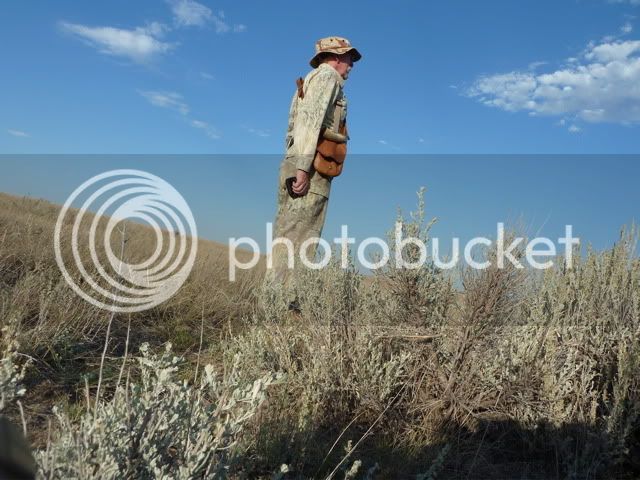
If I were to hunt hogs, and there are a number of Russian boar (someone turned some loose) in and area of AK I sometimes visit, I would use my 16 bore rifle. It also shoots pure lead balls, unpatched balls in paper cartridges and hard (W-W alloy) balls to the same point of impact and "in the group" to past 50 yards.
This is 50 yards with one each of the load above.
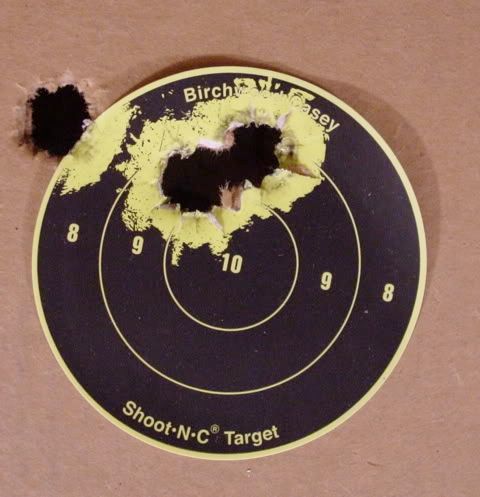
This rifle will do this on command. Smoothbores won't.
While only good for about 3 shots unlubed the paper cartridge is made with a long taper and the point is torn off and placed in the muzzle the powder runs out as the rod is with drawn from the pipes and the ball, now patched in paper is rammed. Prime the rifle and its ready. Quick reload. A percussion gun with a capper is even faster I am told.
Since Forsythe stated that a hardened 15 gauge ball backed with 5 drams of powder would shoot through an Indian Elephant's head from side to side I suspect the 16 bore would work for hogs.
I suspect that the narrow land GM barrels will shoot WW balls well also this will greatly increase penetration on harder targets.
So I can have accuracy and power and a fairly fast followup. What is my need for a SB no matter how far I am shooting? The rifle is not handicapped at short range.
This rifle is actually pretty handy and is HC for 1800-1840 for those who need HC.
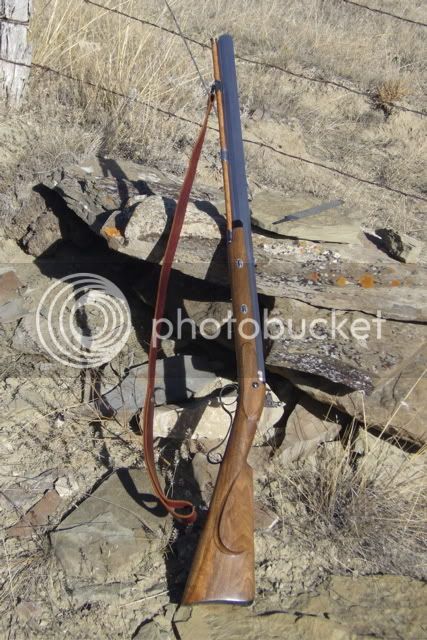
So just what advantage does the smoothbore have over this rifle for shooting solid shot?
heck its a 16 gauge with a 80" twist I should test shot in it as well. I did this with a rifled pistol years ago, took a lot of shot (about an ounce) to make a 54 caliber pistol useful and since I knew I could shoot grouse in the head at the range its patterns went to pot I could see not reason to shoot twice the lead for the same outcome.
As I finished my other post. Its up to the person, ITS A CHOICE. But there is a lot of BS spread about what a wonderful "survival gun" for example the SB is. Until the amount of lead and powder needed to make it really as "useful" as they claim is really thought about. Open bored shotguns under 20 or maybe 28 gauge are not all that effective.
As I have stated before when shooting solid shot there is no valid reason to do so from a smoothbore unless its just something the person wants to do.
Dan
medic302 said:poor medical care and knowledge killed frasier. it took him several days to die. that .50 ball at 300 yrds has about as much energy as a 22.
Energy is not a valid way to judge wounding/killing power of slow moving lead projectiles like a 50 caliber RB.
Ever shoot a 50 caliber rifle at 300 yards?
Hanger tells of a longrifle ball killing a horse at 400. Caliber is not mentioned.
I did one day and the one ball that was farthest out cut into a small cedar tree after cutting a chunk out of a 1" diameter limb. It hit near the edge of the tree in about an inch and penetrated about 4" erupting the wood. Now about 3 years later the erupted wood is gone
If you think a 22rf will make a wound of this magnitude at any distance you have a lot more 22rf than I ever shot.
I may have a photo I took a couple of weeks ago. I was going to did out the ball but the tree is healing it over and did not want to chop it up.
That Fraser would perhaps have survived the wound today is meaningless. He as not wounded in the 21st century. HE WAS DISABLED and unable to continue in command. This was a blow to the British. The mission was to take him out of the fight. One of Morgan men did this. Trying to make light of it now is simply talk for the sake of talk. EVEN TODAY he would have been out of the fight unless wearing body armor.
Dan
August West
40 Cal.
- Joined
- Apr 12, 2010
- Messages
- 397
- Reaction score
- 4
Dan Phariss said:So just what advantage does the smoothbore have over this rifle for shooting solid shot?
Dan
Absolutely none. Chris
Jason Lewis
Moderator
- Joined
- Oct 6, 2009
- Messages
- 1,654
- Reaction score
- 8
"Energy is not a valid way to judge wounding/killing power of slow moving lead projectiles like a 50 caliber RB."
it's not? i guess RB don't know about physics then. because apparently the awesome 200ft/lbs of force it has at 300yrds is very overlooked.
"Ever shoot a 50 caliber rifle at 300 yards?"
nope, i shoot .45's at 1,000yrds, i'm afraid it's pretty hard to dope the 90+inches of drop with a roundball at 300yrds.
"Hanger tells of a longrifle ball killing a horse at 400"
really 400yrds, really? how'd this guy know it was a long rifle ball? there was a lot of smoke on a 18th century battlefield. did he see the shooter? how many days did it take the horse to die? or was it a brain shot?.
"I did one day and the one ball that was farthest out cut into a small cedar tree after cutting a chunk out of a 1" diameter limb. It hit near the edge of the tree in about an inch and penetrated about 4" erupting the wood."
so you accidently hit a small limb and grazed a tree of obviously soft wood, of course it erupted the wood, the 1/2" projectile was just under the bark.
"If you think a 22rf will make a wound of this magnitude at any distance you have a lot more 22rf than I ever shot."
an exaggeration on my part, i appologise.
"That Fraser would perhaps have survived the wound today is meaningless. He as not wounded in the 21st century."
you're right, it also doesn't have anything to do with wha the OP asked about either, nor does frontier economics about the efficiency of particular firearms. in the 21rst century we don't have to worry about that extra powder it may or maynot take to fuel a gun. the OP just wanted the know the differances between rifles and smoothbores to help his own choice. the guy didn't want a lecture on things that have nothing to do with his question.
it's not? i guess RB don't know about physics then. because apparently the awesome 200ft/lbs of force it has at 300yrds is very overlooked.
"Ever shoot a 50 caliber rifle at 300 yards?"
nope, i shoot .45's at 1,000yrds, i'm afraid it's pretty hard to dope the 90+inches of drop with a roundball at 300yrds.
"Hanger tells of a longrifle ball killing a horse at 400"
really 400yrds, really? how'd this guy know it was a long rifle ball? there was a lot of smoke on a 18th century battlefield. did he see the shooter? how many days did it take the horse to die? or was it a brain shot?.
"I did one day and the one ball that was farthest out cut into a small cedar tree after cutting a chunk out of a 1" diameter limb. It hit near the edge of the tree in about an inch and penetrated about 4" erupting the wood."
so you accidently hit a small limb and grazed a tree of obviously soft wood, of course it erupted the wood, the 1/2" projectile was just under the bark.
"If you think a 22rf will make a wound of this magnitude at any distance you have a lot more 22rf than I ever shot."
an exaggeration on my part, i appologise.
"That Fraser would perhaps have survived the wound today is meaningless. He as not wounded in the 21st century."
you're right, it also doesn't have anything to do with wha the OP asked about either, nor does frontier economics about the efficiency of particular firearms. in the 21rst century we don't have to worry about that extra powder it may or maynot take to fuel a gun. the OP just wanted the know the differances between rifles and smoothbores to help his own choice. the guy didn't want a lecture on things that have nothing to do with his question.
medic302 said:"Energy is not a valid way to judge wounding/killing power of slow moving lead projectiles like a 50 caliber RB."
it's not? i guess RB don't know about physics then. because apparently the awesome 200ft/lbs of force it has at 300yrds is very overlooked.
"Ever shoot a 50 caliber rifle at 300 yards?"
nope, i shoot .45's at 1,000yrds, i'm afraid it's pretty hard to dope the 90+inches of drop with a roundball at 300yrds.
"Hanger tells of a longrifle ball killing a horse at 400"
really 400yrds, really? how'd this guy know it was a long rifle ball? there was a lot of smoke on a 18th century battlefield. did he see the shooter? how many days did it take the horse to die? or was it a brain shot?.
"I did one day and the one ball that was farthest out cut into a small cedar tree after cutting a chunk out of a 1" diameter limb. It hit near the edge of the tree in about an inch and penetrated about 4" erupting the wood."
so you accidently hit a small limb and grazed a tree of obviously soft wood, of course it erupted the wood, the 1/2" projectile was just under the bark.
"If you think a 22rf will make a wound of this magnitude at any distance you have a lot more 22rf than I ever shot."
an exaggeration on my part, i appologise.
"That Fraser would perhaps have survived the wound today is meaningless. He as not wounded in the 21st century."
you're right, it also doesn't have anything to do with wha the OP asked about either, nor does frontier economics about the efficiency of particular firearms. in the 21rst century we don't have to worry about that extra powder it may or maynot take to fuel a gun. the OP just wanted the know the differances between rifles and smoothbores to help his own choice. the guy didn't want a lecture on things that have nothing to do with his question.
Just lost a post. Hate that.
The energy theory of projectile effectiveness is really no applicable to low velocity lead bullet arms. In this context it just a number. Some research into the writing of people who hunt will confirm that shot placement trumps power everytime and since a 40 or larger caliber steel jacketed solid that trasfers little energy (relatively) is preferred by a great many PHs in Africa for things like Cape Buffalo and other large and dangerous game we must assume that energy transfer is not all that important. Add this to the number of Elephant killed by the REALLY anemic (in actual effectiveness on people) 7.62 X39 and we have some pretty good idea of how much the kinetic energy really means. The M-43 is the typical bullet for the 7.62 x 39
"
M43
Although the new cartridge represented a great leap forward from previous designs, the initial bullet design was flawed. The complete solidity of the M43 projectile causes its only drawback””it is very stable, even while traversing tissue. It begins to yaw only after traversing nearly 30 cm (12 in) of tissue. This greatly reduces the wounding effectiveness of the projectile against humans. Dr. Martin Fackler noted that the wounds from the M43 round were comparable to that of a small handgun round using non-expanding bullets. Unless the round struck something vital, the wound was usually non-fatal, small and quick to heal.
So at 300 yards shooting prone with no support. I hit a man silhouette with one of 3 shots.
MT hilltop pine or cedar is a lot tougher than a man. I figure 4+- inches penetration is near 10 or 12 in a human. Plenty to kill. And he need not have been killed he simply needed to be incapacitated. So the mission was accomplished.
I would submit that a 50 caliber RB wound would be "small and quick to heal" even at this range.
The account Col.(then Capt) Hanger gave of the killing of the "bugleman's" horse took place while scouting and he stated he was very familiar with the area having been over it several times. The shooter was a single rifleman who walked out on a mill pond dam, lay prone and fired one shot that passed between Hanger and his CO who were conversing in normal tones while horse back and struck the horse behind them. It then fell dead.
I am fairly well experienced with BPCRs shooting long bullets at longer ranges. I have a 15 pound 45 2.6" Shiloh and a 40-60 maynard on a Hi-Wall.
I was the Custom shop/Gunsmith/"Tech guy" at Shiloh Rifle for several years so I understand a great deal about BPCRs. If you shoot BPCR some the things my shooting companions and I learned or re-learned and put into use are probably in use by you.
Shooting 1000 yards with a 3 caliber long + bullet has little to do with the PRB.
If you read my first post or two you will see that I answered the original posters question.
If shooting solid shot the rifle is preferable.
If you shoot small shot the SB is better.
If you only shoot solid shot there is no logical reason to own a smooth bore. The group size of a smooth rifle at 50 yards is about 4 times that of a rifle. I.E. 1" vs 4" to 5".
And later
BUT if someone wants a smooth rifle or fowler or musket its THEIR decision. But it needs to be based on some information.
The question was asked and I gave MY opinion based on my 45+ years of shooting MLs and research.
But we had drifted into effectiveness, original use of the frontier (by the original poster BTW) so it gets more complex and perhaps even more subjective.
If you live and hunt in heavily populated areas a shotgun may be the best choice for Squirrel for SAFETY REASONS. Effectiveness and cost then have to take a back seat.
I provided information based on original letters from the mid-18th century and personal experiences of myself and people I know.
This allows the original poster to make decisions on things besides guess work
That is the whole point here. Discussion discloses facts and opinions.
How relevant these may be is largely up to the reader/question poser and what HE wants to do.
A long discussion of this type gives the people reading it a wider base of knowledge/opinion/experience on which to make decisions on.
People mention ease of loading. Its important to some extent. But in the 18th century if at 50 yards, opposing natives if you shoot and miss or if the target is hit and his companion charges loading a ML in the time a man can sprint 50 yards is tough so reloads in this context are probably irrelevant. Being able to parry a tomahawk, war club or blade and kill or disable the wielder may the far more critical.
Something like this
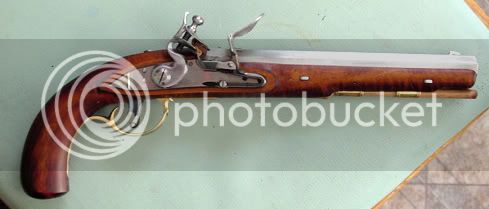
or this
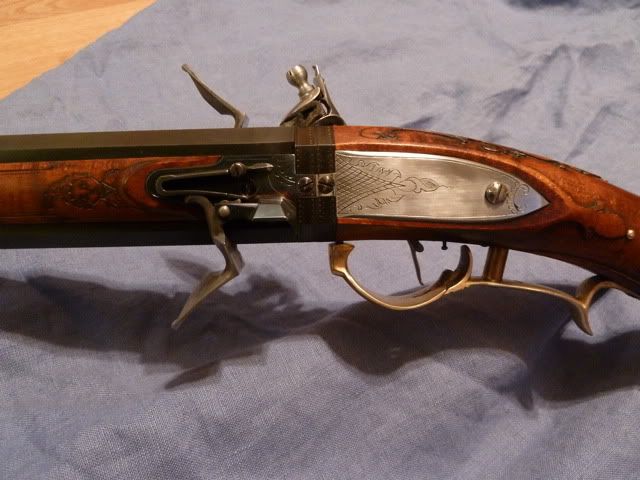
Might be worth the price.
I gave several book titles to read on the subject that will allow the reader to develop his own opinions. There ARE others as well I am sure that may or may not give conflicting opinions. I only know of those I have personally read.
What someone else wants to hunt with it not important to me.
But when people start to talk of effectiveness at the TIME then we must look at the time and see what the people who happened to write things down had to say. How the guns were used, what the ammunition was like etc etc.
In the writings cited they seem to be saying the rifle is more effective and cheaper to shoot. They tell us the very poor are often rifle armed on the frontier and that the natives will pay huge prices to get a rifle barreled gun.
People here relate THEIR experiences. Its the only experience we can recount. We can't recount Boone's or Murphy's or Daniel Morgan's personal experience. So we have no choice but to fall back on current experience and then try to compare this with the writings of the past.
Trying to compare modern medical care, round ball energy levels vs 22rf energy levels or 1000 yard competition with bulleted MLs or BPCRs to 18th century America is just words on paper in this context.
Dan
Anyone think there may be a chance that Dan does not think much of a smoothbore as a utiitarian gun one could use for many situations, even though it was done for a hundred years in the past before the rifle became popular? You cannot use economics to determine the validity of usage of any type of gun, many people in the past chose the smoothbore and did quite well asw do many today (ML's), don't get ol' Dan going full bore on this one again, it just gets plain sad.
".the guy didn't want a lecture on things that have nothing to do with his question."
Oh, but he gonna get one!
:rotf: :rotf:
".the guy didn't want a lecture on things that have nothing to do with his question."
Oh, but he gonna get one!
:rotf: :rotf:
tg said:Anyone think there may be a chance that Dan does not think much of a smoothbore as a utiitarian gun one could use for many situations, even though it was done for a hundred years in the past before the rifle became popular? You cannot use economics to determine the validity of usage of any type of gun, many people in the past chose the smoothbore and did quite well asw do many today (ML's), don't get ol' Dan going full bore on this one again, it just gets plain sad.
".the guy didn't want a lecture on things that have nothing to do with his question."
Oh, but he gonna get one!
:rotf: :rotf:
You think you are :rotf:
Heh heh heh.
Dan
- Joined
- May 9, 2005
- Messages
- 1,548
- Reaction score
- 100
I, for one, welcome the discussion on both sides, as I'm learning or reconsidering information from people on both sides of the issue. Please keep it coming and keep it civil, thanks!
I don't think, as the OP specified "another" rifle, that he's going to be a one-gun man. Given that most ML shooters today do not let the cost of lead or powder become their primary concerns - or most would use cheaper suppository guns - there are good arguments for both smoothbore and rifle. I do think geography and terrain have something to do with the choice, if hunting is a factor.
As I don't hunt at present, the historical discussion is even more interesting to me than the disagreement over terminal ballistics.
I don't think, as the OP specified "another" rifle, that he's going to be a one-gun man. Given that most ML shooters today do not let the cost of lead or powder become their primary concerns - or most would use cheaper suppository guns - there are good arguments for both smoothbore and rifle. I do think geography and terrain have something to do with the choice, if hunting is a factor.
As I don't hunt at present, the historical discussion is even more interesting to me than the disagreement over terminal ballistics.
August West
40 Cal.
- Joined
- Apr 12, 2010
- Messages
- 397
- Reaction score
- 4
I think your comment about location and terrain plays more into it than almost any other factor. I grew up in the rural appalachians, most old timers had two guns, some sort of a shotgun and a 22 rifle. My grandfather had a remington single shot 22 and a browning a5 that looked like it had been through ww1 and 2, Mike Brooks' aged guns look new compared to it. He used the 22 for killing hogs and coonhunting and the shotgun for everything else, I don't remember him not having venison in the fall. I have my great uncles iver johnson 16 gauge that looks just as used as my grandpa's a5. The forearm is held on with friction tape and the buttpad is cut from what looks like a piece of tire.
Dan probably knows a lot more than me about historical fact but I know where I grew up the shotguns versatility was king. I also know from my reading that there were a lot of people shooting smoothbores in colonial America. Maybe these were all indians but I bet a few poor white boys were putting meat on the table with them as well. Chris
Dan probably knows a lot more than me about historical fact but I know where I grew up the shotguns versatility was king. I also know from my reading that there were a lot of people shooting smoothbores in colonial America. Maybe these were all indians but I bet a few poor white boys were putting meat on the table with them as well. Chris
Similar threads
- Locked
- Replies
- 117
- Views
- 7K
Latest posts
-
-
-
-
-
-
-
FOR SALE very nice Veteran Arms 1st Land Pattern Brown Bess for sale!
- Latest: FlintlockMilitaryRifle
-




